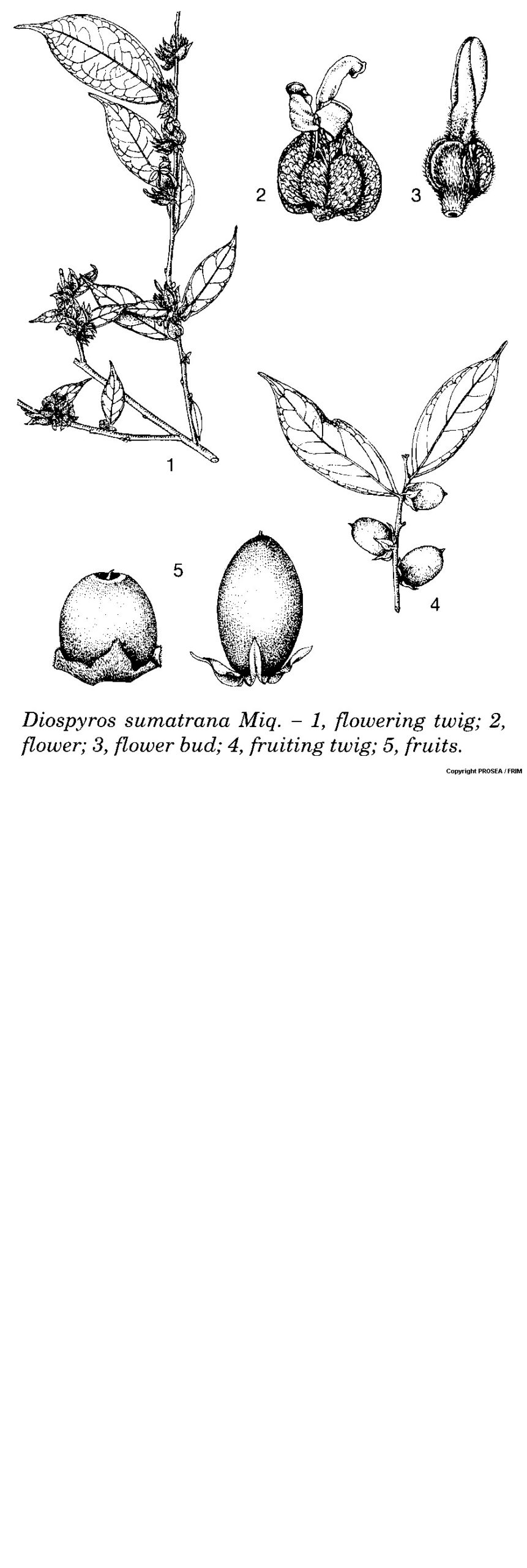Diospyros sumatrana Miq.
Family
Ebenaceae
Synonyms
D. graciliflora King & Gamble, D. hendersonii Ridley, D. velutinosa Bakh.
Vernacular Names
| Malaysia | Kayu arang, kayu sihangus, meribut (Peninsular). |
| Thailand | Lakkhoeilakklua, nian, dam (Peninsular). |
Geographical Distributions
Diospyros sumatrana is distributed aroundThailand, Peninsular Malaysia, Sumatra and Borneo.
Description
D. sumatranais a medium-sized tree which can reach up to measure 30 m tall. Its bole is up to measure 40 cm in diametre.
The leaves are oblong or ovate to obovate in shape, with a size of measuring about 2-20 cm x 1.2-7.5 cm, acute to narrowly tapering base, acuminate apex, hairless to densely pubescent below, glabrescent above while the tertiary venation is reticulate to vaguely transverse.
The male flowers are in (1-)3-10(-16)-flowered cymes, with 4-merous while the stamens are 8-16(-20). The female flowers are in 1-5-flowered cymes, 4-merous, valvate-plicate of sepal lobes, pubescent on both sides, divided to halfway of the petal and 8-9 staminodes. The ovary is with 2-forked style and 4 uni-ovulate locules.
The fruit is ellipsoid or ovoid to spherical in shape, and rarely obovoid, measuring about 1.2-2.5 cm x 0.7-2.4 cm and it is hairless to hairy.
Ecology / Cultivation
D. sumatrana is a polymorphic species with a large variation in size and hairiness of leaves, number of secondary veins and tertiary venation pattern. It is common and occurs in lowland to montane forest, up to 1700 m altitude. The density of the wood is 615-865 kg/m3 at 15% moisture content.
Line Drawing / Photograph
References
- Plant Resources of South-East Asia No. 5(2): Timber trees: Minor commercial timbers.




